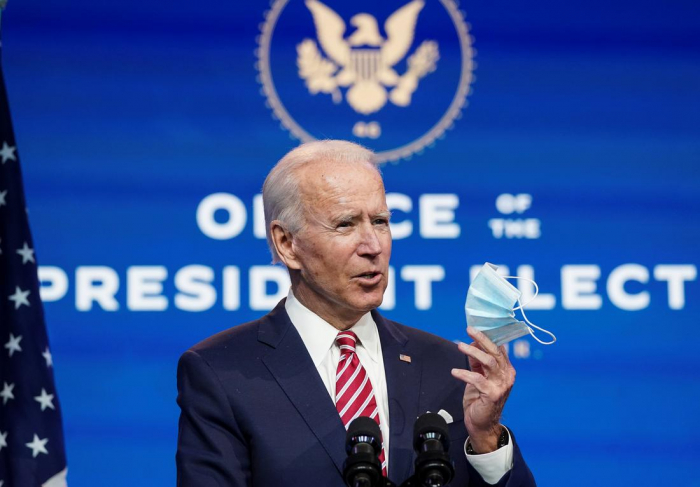The Biden administration has imposed temporary limits on drone strikes targeting suspected terrorists outside the battlefields of Afghanistan, Syria and Iraq, tightening a Trump-era policy while officials review how much leeway to give the military and the CIA in counterterrorism operations.
The restriction was quietly imposed on Jan. 20 — the day of President Biden’s inauguration — by national security adviser Jake Sullivan, according to administration officials who spoke on the condition of anonymity to describe internal deliberations.
The policy move comes as almost two decades of an international war against Islamist terrorism has weakened though not vanquished al-Qaeda and the Islamic State, whose affiliates maintain the capability to strike regionally and occasionally inspire and plot attacks against the United States.
Under the temporary guidelines, the military and the CIA must seek White House sign-off before attempting a kill-or-capture mission against suspects in places where the U.S. military has few troops, such as Somalia, Yemen and Libya. In the Trump administration, they did not need such approval but still needed the go-ahead from the U.S. ambassador overseeing the country where the operation was to take place.
The shift was first reported by the New York Times.
“At the beginning of the administration, President Biden established new interim guidance concerning the United States’ use of military force and related national security operations,” National Security Council spokeswoman Emily Horne said.
The purpose, she said, was to ensure that the president has “full visibility” on proposed significant operations while the NSC staff leads a review of the legal and policy frameworks governing drone strikes. The review also will seek to ensure appropriate transparency measures, she said.
Reps. Mike D. Rogers (R-Ala.) and Michael McCaul (R-Tex.) criticized the move as “yet another bureaucratic impediment that will give our enemies an advantage.” Rogers, the ranking Republican on the armed services panel and McCaul, his counterpart on foreign affairs, said in a statement: “While our operators wait for approval from Washington, terrorists will escape to plot and fight against the United States and our allies for another day.”
The use of unmanned aircraft in counterterrorism operations was stepped up under the Obama administration, which sought to kill terrorists while minimizing U.S. casualties. The strikes, including some by the CIA, stirred controversy over civilian casualties, the targeting in some cases of U.S. citizens and a lack of transparency on the rules governing the strikes.
The Obama White House spent more than a year crafting a policy finalized in May 2013 that covered targeted strikes and commando raids, a policy which President Barack Obama discussed publicly. The policy, largely coordinated by then-NSC legal adviser Avril Haines, who is now Biden’s director of national intelligence, required a finding that a target posed a “continuing, imminent threat” to U.S. citizens. It also said a lethal strike was allowed only if capture was deemed infeasible and if there was “near certainty” civilians would not be harmed.
Some cases required presidential approval, such as when a U.S. citizen or resident was targeted in an overseas operation. The process, which involved lawyers and policy officials across the government, was widely seen as cumbersome with an unnecessary degree of White House oversight.
The Trump administration developed its own policy, which has not been released publicly. It dropped the requirement for White House sign-off and relaxed the “near certainty” standard for men, depending on the target’s location, such as a remote area, according to a person familiar with the rules.
If, however, the suspect was in a city, the standard remained “near certainty,” the person said. “The rules were looser in remote areas of the country where it was more likely that gatherings of military-age men have no innocent purpose.” In all cases, a strike required an ambassador’s permission, the person said.
Luke Hartig, an Obama White House counterterrorism official, said a revision is needed, but not to 2013 levels. “We need to move past a space where the White House is signing off on a great many of the operations themselves,” he said. “That’s where I think an empowered and accountable Pentagon plays a really key role.”
With counterterrorism a lower priority than in past administrations, he added, the White House “will not have the time to spend on terrorism” that it did in the past. “The more time you spend on reviewing operations, the less time you spend on developing preventative and nonmilitary approaches to counterterrorism.”
The Trump administration carried out more than 160 strikes each in Yemen and Somalia and about 10 in Libya since 2017, according to Long War Journal. Many were announced by the Pentagon. Often, it was not clear if the military or the CIA launched the strikes.
Drone strikes “have proven to be without question the most effective tool in the counterterrorism fight since 9/11,” said Marc Polymeropoulos, a retired senior CIA officer who worked on counterterrorism issues.
Polymeropoulos said he expected the administration “to find a middle ground” between the policies of the Obama and Trump eras.
The Washington Post
More about:
















































